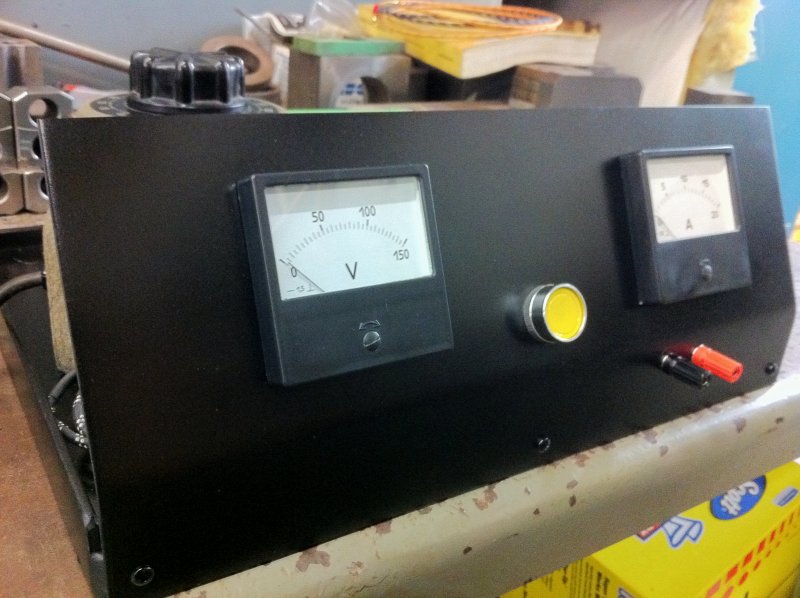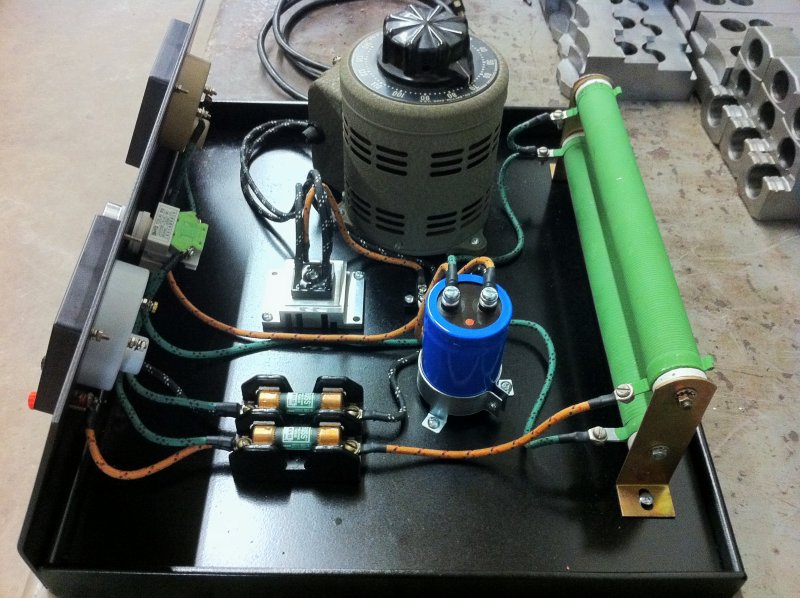FideBladeWorks
New Member
Hey all, this is my first post since returning to this forum after many years, excited to hopefully be learning here consistently and working with electronics more often. I have a very basic knowledge of how electricity works and the function of basic components. As a knifemaker which is what i do as my main occupation i would like to build a variable dc power supply for anodizing titanium, and thats where i need your help. I hope to make a pretty exact copy of another homebrew power supply that ill picture below, and i know the most necessary components are the variac, capacitor, and bridge rectifier, but i need help identifying the other parts that were used, their purpose, and making a schematic so i can begin this build. I plan to use a variac 0-130v with 5amp max and need help deciding what ratings i need to look for as far as the bridge rectifier and capacitor goes as well as for the the other parts such as displays and fuses, not to mention i have no clue what those large green cylinders are. I thank you all in advance




